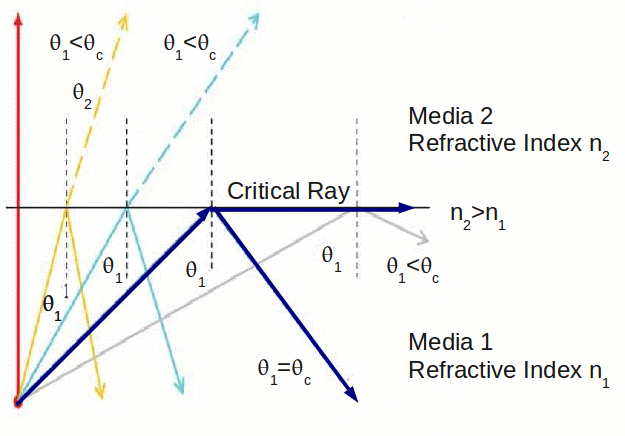Both transmission and reflection can happen at the boundary between two media: in fact both may happen simultaneously - the yellow and cyan rays below. For angles greater than a certain angle, called the critical angle, there is no refraction and all the light is reflected – the grey ray below. This phenomenon is called 'total internal reflection', and only happens when the light is travelling in the denser medium.

If the angle of incidence equals a 'critical angle' labelled![]() there is no reflection but part of the incident light traces a 'critical path' along the interface between the two media – the blue rays above. This is called the 'critical ray'. The critical angle depends on the material.
there is no reflection but part of the incident light traces a 'critical path' along the interface between the two media – the blue rays above. This is called the 'critical ray'. The critical angle depends on the material.
The critical angle can be worked out from Snell's law,![]()
For the critical ray![]() If media 2 is air then
If media 2 is air then![]() and if media 1 is glass of refractive index 1.4, then
and if media 1 is glass of refractive index 1.4, then
![]()
